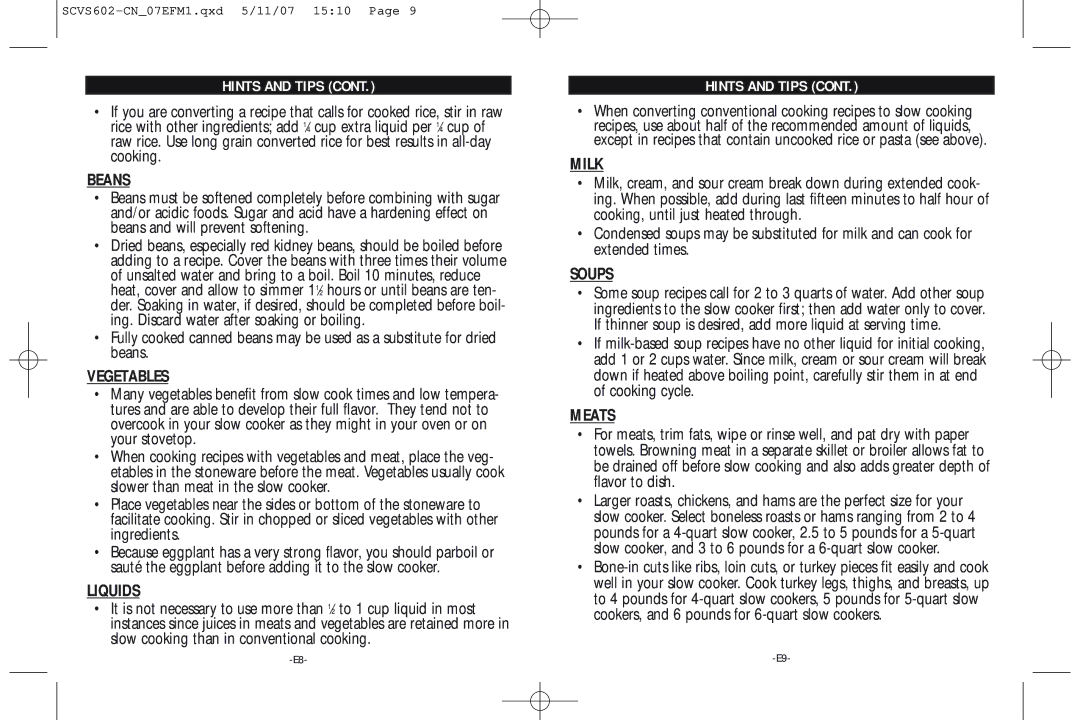
HINTS AND TIPS (CONT.)
•If you are converting a recipe that calls for cooked rice, stir in raw rice with other ingredients; add 1⁄4 cup extra liquid per 1⁄4 cup of raw rice. Use long grain converted rice for best results in
BEANS
•Beans must be softened completely before combining with sugar and/or acidic foods. Sugar and acid have a hardening effect on beans and will prevent softening.
•Dried beans, especially red kidney beans, should be boiled before adding to a recipe. Cover the beans with three times their volume of unsalted water and bring to a boil. Boil 10 minutes, reduce heat, cover and allow to simmer 11⁄2 hours or until beans are ten- der. Soaking in water, if desired, should be completed before boil- ing. Discard water after soaking or boiling.
•Fully cooked canned beans may be used as a substitute for dried beans.
VEGETABLES
•Many vegetables benefit from slow cook times and low tempera- tures and are able to develop their full flavor. They tend not to overcook in your slow cooker as they might in your oven or on your stovetop.
•When cooking recipes with vegetables and meat, place the veg- etables in the stoneware before the meat. Vegetables usually cook slower than meat in the slow cooker.
•Place vegetables near the sides or bottom of the stoneware to facilitate cooking. Stir in chopped or sliced vegetables with other ingredients.
•Because eggplant has a very strong flavor, you should parboil or sauté the eggplant before adding it to the slow cooker.
LIQUIDS
•It is not necessary to use more than 1⁄2 to 1 cup liquid in most instances since juices in meats and vegetables are retained more in slow cooking than in conventional cooking.
HINTS AND TIPS (CONT.)
•When converting conventional cooking recipes to slow cooking recipes, use about half of the recommended amount of liquids, except in recipes that contain uncooked rice or pasta (see above).
MILK
•Milk, cream, and sour cream break down during extended cook- ing. When possible, add during last fifteen minutes to half hour of cooking, until just heated through.
•Condensed soups may be substituted for milk and can cook for extended times.
SOUPS
•Some soup recipes call for 2 to 3 quarts of water. Add other soup ingredients to the slow cooker first; then add water only to cover. If thinner soup is desired, add more liquid at serving time.
•If
MEATS
•For meats, trim fats, wipe or rinse well, and pat dry with paper towels. Browning meat in a separate skillet or broiler allows fat to be drained off before slow cooking and also adds greater depth of flavor to dish.
•Larger roasts, chickens, and hams are the perfect size for your slow cooker. Select boneless roasts or hams ranging from 2 to 4 pounds for a
•
